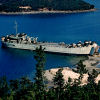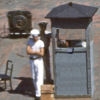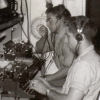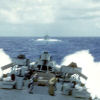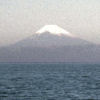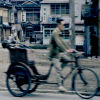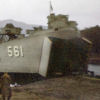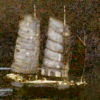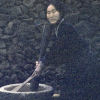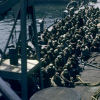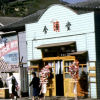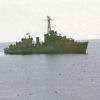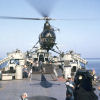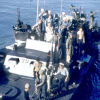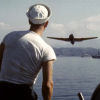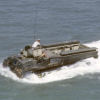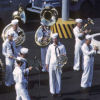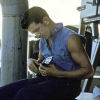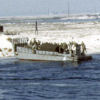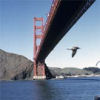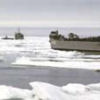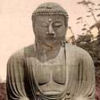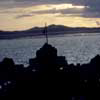

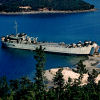
”Come In, Swanee Leader"
The Thirty-Three-Month Odyssey of LST 561 in the 1950s
with Over 300 Photographs by the Author
|
|
Introduction
After enlisting in the U.S. Navy in September 1950, the author completed Electronics School and was assigned to USS LST 561. |
|
|
Chapter 1 - Going Aboard
The first time for the author to be aboard a ship was on 23 Oct. 1951. Drawings and descriptions of compartments in the stern of the Landing Ship Tank are presented. |
|
|
Chapter 2 - 01 Deck Operations
How the ship was controlled. The only "technical" chapter in the book describes howthe navigation, radar, and other operations were conducted. |
|
|
Chapter 3 - Oakland to Hawaii
A nine day introduction to the gyrations of this flat-bottomed floating roller coaster. |
|
|
Chapter 4 - Hawaii to Japan
After seventeen days of relentless motion, the LST arrives at Yokosuka, Japan.and into the aura of the Far East. |
|
|
Chapter 5 - Yokosuka to Pusan, Korea
The voyage through the Shiminoseki Straits between Kyushu and Honshu to wartime Korea. |
|
|
Chapter 6 - Pusan
Greetings from Korea included a corpse floating in the water by the bow of the ship as it was moored to a Pusan quay. |
|
|
Chapter 7 - Pusan to Koje-do
The first of numerous trips to the island of Koje was made on 29 December 1951. This initial trip was to transport 600 North Korean prisoners of war. |
|
|
Chapter 8 - Koje-do
The compounds on Koje contained more that 130,000 POWs, which was five times the number for which they were designed. Many photos of life on the island. |
|
|
Chapter 9 - POW Operations
Numerous trips were made with prisoners of war between Koje-do and the Korean mainland. Some voyages were with as many as 2,000 POWs aboard. |
|
|
Chapter 10 - Sasebo, Japan
A look into the Japan that was emerging from the disaster of World War II. Many color photos of this Kyushu seaport. |
|
|
Chapter 11 - Prologue to 3/3/52
This chapter summerizes the war in Korea and describes the situation in the Haiju Bay area. |
|
|
Chapter 12 - March 3, 1952
At 7:10 AM the LCPL of the ship left, never to return. A minute by minute account of what occurred this day with the loss of the boat and the twelve men aboard is detailed in the chapter. |
|
|
Chapter 13 - Haeju-man Operations
The primary function of the LST was to control the movement of junks near the island of Taeyonp’yong-do. |
|
|
Chapter 14 - Taeyonp'yong-do
This island was the base of guerrilla operations and the center of covert activities by the CIA in the Haeju-man area. |
|
|
Chapter 15 - Apple Pie to Yokosuka
Apple Pie was the code word for Taeyonp’yong-do. Failure of the fresh-water distillery forced the ship to return to Japan for repairs. |
|
|
Chapter 16 - Inch'on
Independence Day1952 and amphibious excercises with U.S. Marines at Sokcho-ri are featured in this chapter. Great color photos of the tracked vehicles (LVTs) are included. |
|
|
Chapter 17 - Back to the USA
Mooring at San Diego on September 8, 1952 marked the end of a very busy tour of duty in the Far East. |
|
|
Chapter 18 - Shipboard Life
The food, laundry, enertainment and what it was like living on an LST during the 1950s are described here. |
|
|
Chapter 19 - West Coast Operations
Amphibious excercises involving pontoons and US Army troops from Washington (state) are displayed in this chapter. |
|
|
Chapter 20 - San Francisco Bay
The ship traveled to the shipyard at Hunters Point for a well-deserved maintenance period. |
|
|
Chapter 21 - Arctic Operations
Transporting material for construction of the DEW line took the LST through the pack ice of the Arctic. |
|
|
Chapter 22 - Return to the Far East
Back to Japan and Korea with manuevers at Okinawa and Iwo Jima. |
|
|
Chapter 23 - The Last Months
The return to San Diego marked the end of the author’s very interesting thirty-three-months of travel aboard USS LST 561 |
